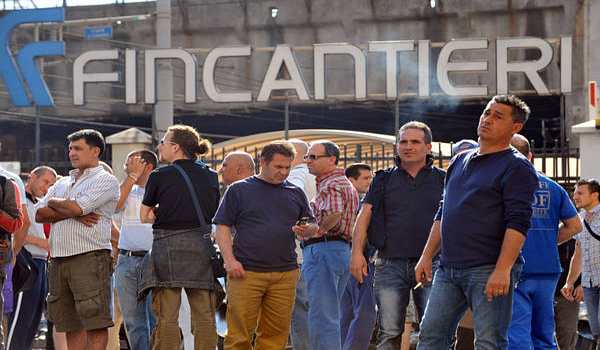Reportage
Shipbuilder’s death casts spotlight on protections for contractors
Sinisa Brankovic fell to his death on a construction site of Europe’s largest shipbuilder. Immediately the entire workforce went on strike.

He fell from a scaffold. Sinisa Brankovic, a 40-year-old Bosnian supervisor for a foreign firm, was killed just after 9:30 a.m. Thursday at the shipyard in Ponzano, outside of Venice.
Work immediately halted across Fincantieri, the Trieste-based shipbuilder, as employees went on a massive, spontaneous strike, revealing the cohesion of the company’s contract workers. The company employees in their blue coveralls assembled side by side with Bengalis, Balkans and other foreigners. In the end, they decided to donate one hour of work to the Brankovic family. At the Italian Labor Union (UIL) conference, at Villa Manin in Passariano, the secretary general offered a minute of silence at commencement.
The accident is still under investigation, but the preliminary reports suggest that Brankovic was at a construction site where they were building new structures used for painting large ships. While moving along a scaffold in the roof of the structure under construction, his safety harness came loose, he lost his balance and fell 20 yards. He died on impact. In a statement, Fincantieri said Brankovic was employed by a specialized company and working in a role in keeping with his 20 years of experience.
Giampiero Turus, regional secretary of the labor union FIM-CISL, highlighted the “strong signal” that the spontaneous strike sent. “This is the first time that workers of outsourced companies have stopped in such a participatory way.”
The metalworkers trade unions (FIM, FIOM and UILM) issued a joint statement on Brankovic’s death. “Work should give us hope and a future, not cause death and despair in the victims’ families. It is no longer acceptable that anyone die like this, without having secured the most basic protection and prevention measures in the workplace and supervision over their use. It is increasingly common for incidents like these to happen along the chain of contracts and sub-contracts, where foreign workers are often excluded from safety and training systems.”
They concluded: “Occupational safety should not be an expense but rather an ongoing investment in the protection and enhancement of the workforce.”
The death and strike put Ponzano back in the spotlight. This region around Monfalcone has been a historically symbolic place since the opening of the shipyard in 1908 by the Cosulich brothers. It also embodies the long parable of the labor movement, from the “march toward socialism” in Tito’s Yugoslavia to the dramatic asbestos massacre of the 1970s, through 2016 with the resounding defeat of the socialist-led municipal government by the right-wing Anna Cisint, who ended 70 years the “Red City Hall.”
The fate of Ponzano is tied hand in glove with Fincantieri, for better or for worse, as demonstrated by the waste management lawsuit affecting four areas of the mega-plant. In June 2015, police sealed off areas, placed sandblasting departments under judicial sequestration, and sorted and stored waste materials. For a month, about 5,000 workers (of which only 1,600 were Fincantieri employees) stayed outside the gates, until the Renzi government ordered production to resume.
Originally published at https://ilmanifesto.it/muore-un-operaio-sciopero-spontaneo-di-tutte-le-ditte-in-appalto-a-fincantieri/ on 2017-03-03
